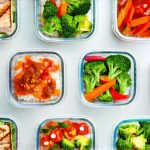Living with bladder sensitivities – whether due to Interstitial Cystic (IC), Overactive Bladder (OAB), or other conditions – often means navigating dietary restrictions alongside everyday life. Many find that certain foods and drinks can trigger symptoms like urgency, frequency, pain, or discomfort. This can feel incredibly limiting, but it doesn’t have to mean sacrificing enjoyable meals. In fact, thoughtful meal planning is one of the most empowering steps you can take towards managing your condition and regaining control over your diet – and ultimately, your quality of life. The key isn’t necessarily eliminating entire food groups (although some may need adjustment), but rather understanding how different foods affect your individual bladder and building a sustainable eating pattern around that knowledge.
Meal prepping specifically becomes invaluable here. It allows you to proactively control ingredients, portion sizes, and cooking methods – all critical factors when dealing with bladder sensitivities. No more last-minute takeout decisions fueled by convenience that later lead to discomfort! Instead, you have nourishing, bladder-friendly options readily available whenever you need them. This article will guide you through creating a meal prep plan tailored for bladder health, focusing on practical strategies and adaptable choices, empowering you to eat with confidence and minimize potential flare-ups. Remember, this is about finding what works for you; personalization is paramount.
Understanding Bladder Triggers & Building Blocks
Identifying your specific triggers is the foundation of any successful bladder-friendly diet. What impacts one person won’t necessarily impact another. Common culprits often include caffeine, alcohol, citrus fruits, tomatoes and tomato-based products, spicy foods, artificial sweeteners, carbonated beverages, and highly acidic foods. However, this isn’t an exhaustive list, and individual sensitivities can vary widely. Keeping a detailed food diary is incredibly helpful – meticulously recording everything you eat and drink, along with any associated symptoms, can reveal patterns over time. Be patient; it may take several weeks to identify clear connections.
Beyond avoiding triggers, focus on incorporating “bladder-friendly building blocks” into your meal prep. These are foods generally well-tolerated by many individuals with bladder sensitivities. Examples include: – Blueberries and pears (less acidic fruits) – Oatmeal and rice – Turkey and chicken (lean proteins) – Olive oil and avocado oil – Herbal teas (non-caffeinated) – Vegetables like potatoes, carrots, broccoli, and green beans. These foods provide a solid foundation for creating balanced and satisfying meals without the risk of exacerbating symptoms.
The goal is to build meals around these base ingredients while carefully introducing potential triggers in small amounts to assess tolerance. Don’t assume you have to eliminate something forever; it might be a matter of quantity or frequency. For instance, you might find that a small amount of tomato sauce doesn’t bother you, but a large portion does. Gradual reintroduction is key – and always listen to your body.
Practical Meal Prep Strategies for Bladder Health
Meal prepping isn’t just about cooking a bunch of food at once; it’s about streamlining the entire process from planning to storage. Start small – don’t try to overhaul your entire diet overnight. Begin by focusing on one or two meals per week, gradually increasing as you become more comfortable. Consider dedicating a specific day each week for prepping – Sunday is popular for many – but choose a time that works best for your schedule.
Planning is crucial. Before you head to the grocery store, create a menu based on your identified bladder-friendly building blocks and any cautiously reintroduced trigger foods. Write down all ingredients needed and stick to the list! This prevents impulse purchases of potentially problematic items. When cooking, prioritize simple recipes that require minimal ingredients and preparation time. Roasting vegetables, grilling lean proteins, and preparing grains like quinoa or rice are excellent options. Finally, invest in good quality storage containers – glass is preferable as it doesn’t retain odors or stains. Properly portioning meals into individual containers makes grab-and-go breakfasts, lunches, and dinners incredibly convenient.
Batch Cooking & Freezing
Batch cooking – preparing large quantities of a single dish – saves significant time and effort. Soups, stews, chili (with bladder-friendly modifications – see below!), and casseroles are ideal for batch cooking as they freeze well. This allows you to have several meals ready to go with minimal effort on busy weeknights. When freezing, allow food to cool completely before transferring it to freezer-safe containers or bags. Label everything clearly with the date and contents.
Freezing is also a fantastic way to preserve seasonal produce. Fruits like blueberries and pears can be frozen for use in smoothies or oatmeal during off-season months. Similarly, vegetables can be blanched (briefly boiled then plunged into ice water) before freezing to maintain their texture and nutrients. Remember that the quality of frozen food may slightly diminish over time, so aim to consume it within a few months.
Adapting Recipes for Bladder Friendliness
Many recipes can be easily adapted to make them more bladder-friendly with just a few simple substitutions. For example: – Replace acidic ingredients like tomatoes or citrus juice with milder alternatives. Consider using pureed carrots or butternut squash for color and flavor in sauces. – Swap spicy seasonings for herbs and spices that are generally well-tolerated, such as basil, oregano, thyme, and ginger. – Use herbal teas instead of caffeinated beverages in recipes.
When making chili, omit tomatoes entirely and use a base of pureed sweet potatoes or butternut squash instead. Avoid adding hot peppers or chili powder. Similarly, when baking, substitute apple cider vinegar for lemon juice in recipes requiring acidity. Be mindful of hidden sources of triggers – many processed foods contain citric acid or artificial sweeteners. Reading labels carefully is essential.
Sample Meal Prep Ideas
Here are a few simple meal prep ideas to get you started: – Breakfast: Overnight oats with blueberries and almond milk; scrambled eggs with spinach and sweet potato hash. – Lunch: Turkey breast and avocado salad on lettuce wraps (avoiding bread); quinoa bowl with roasted vegetables and grilled chicken. – Dinner: Baked salmon with roasted broccoli and rice; lentil soup with carrots and potatoes. Snacks: Pear slices with almond butter, herbal tea.
Remember to tailor these ideas to your own preferences and tolerances. Don’t be afraid to experiment with different flavors and ingredients until you find what works best for you. The key is consistency – regular meal prepping will not only help you manage your bladder health but also reduce stress and improve your overall wellbeing. It’s about creating a sustainable system that empowers you to live a full and active life, even with dietary considerations.





















